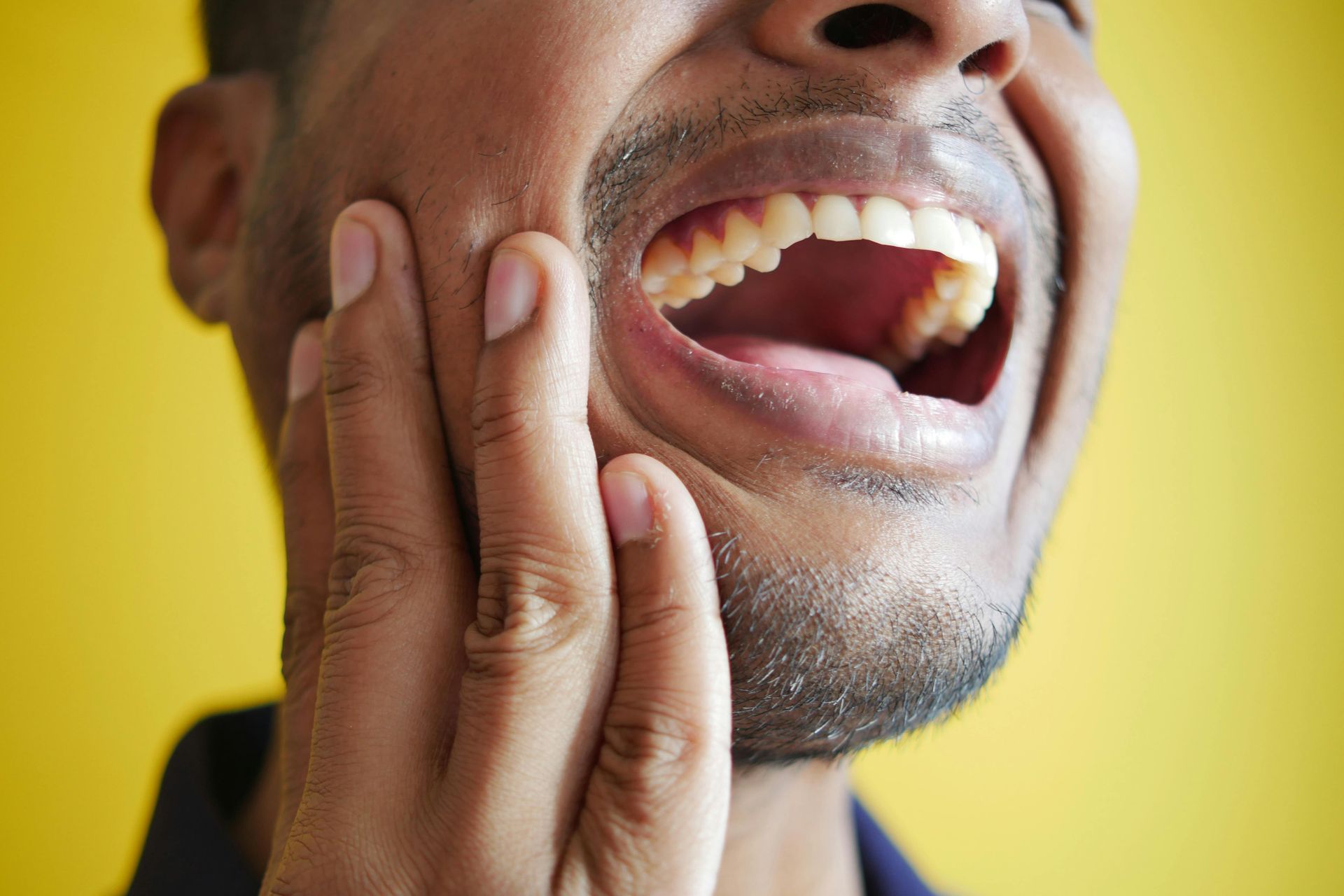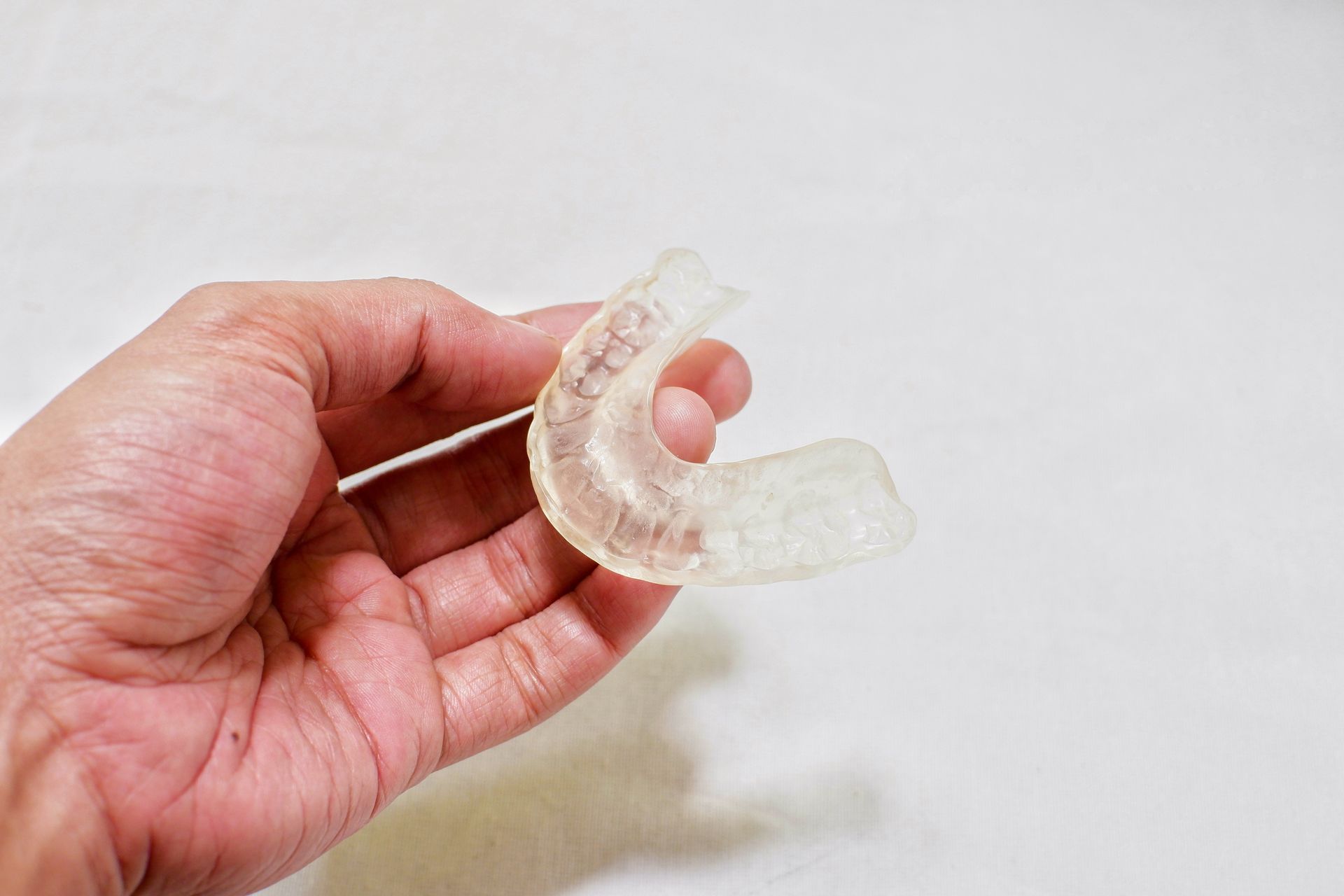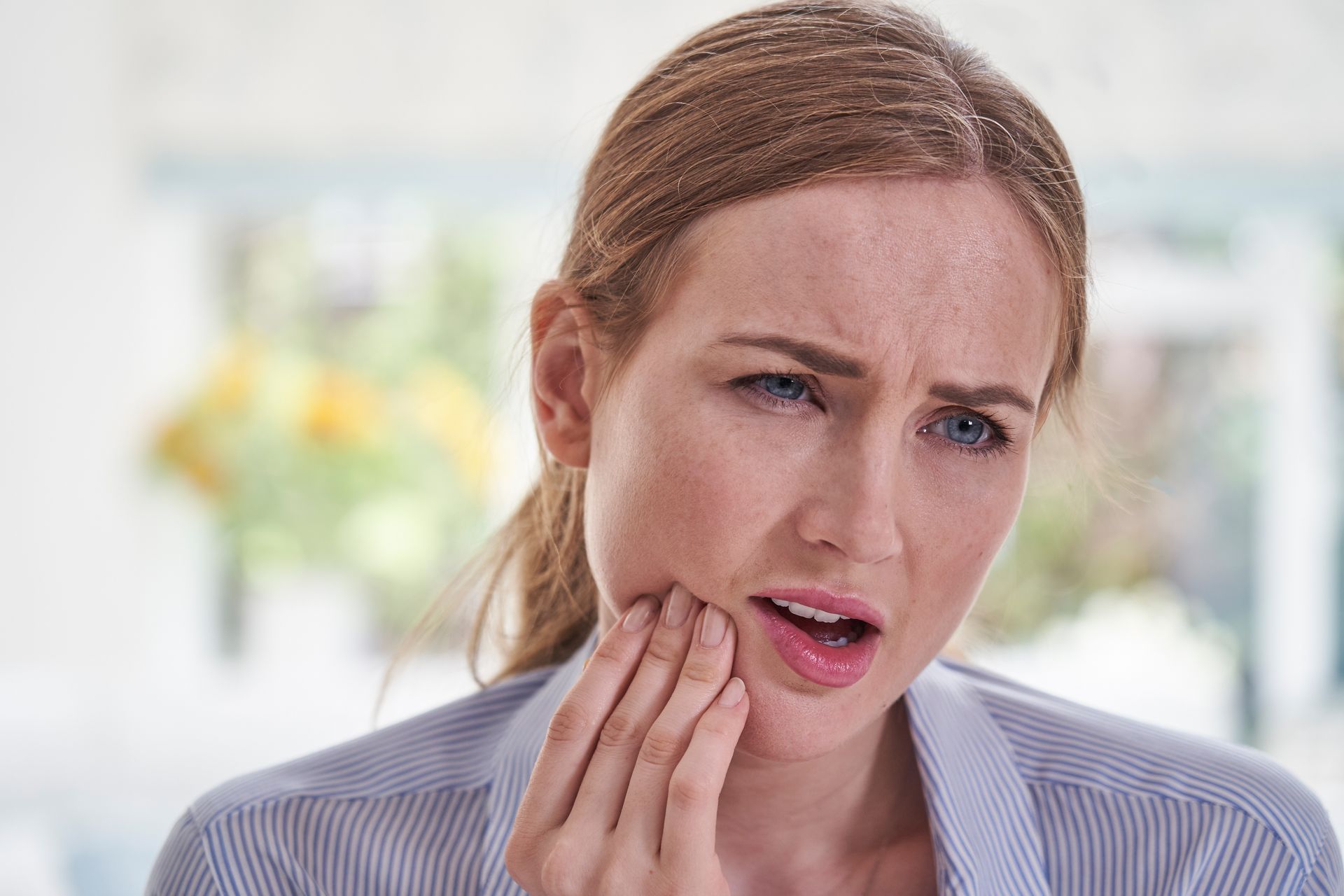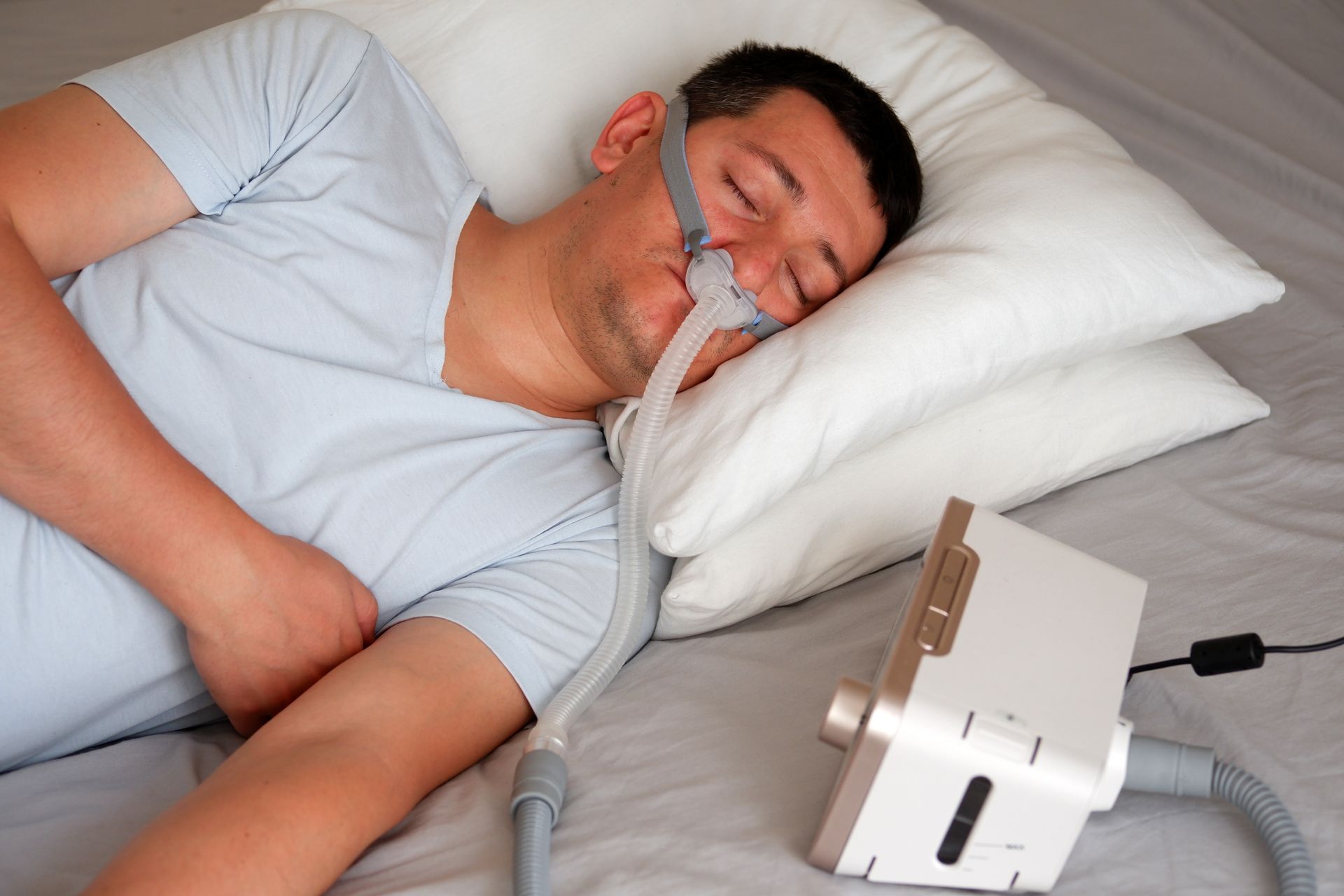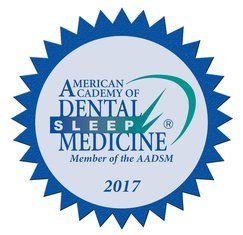Trigger Point Injections to Relieve TMJ and Referred Orofacial Pain
Battling the Frustrations of Jaw, Neck, and Temple Pain

If you’ve ever experienced jaw pain that spreads to your neck, temples, or even your ears, you know how frustrating it can be. TMJ (temporomandibular joint) disorders, such as teeth grinding or clenching, cause discomfort in the jaw. However, they can also trigger pain in the surrounding muscles, which makes everyday activities like talking, chewing, or just relaxing your face feel exhausting. Trigger point injections are a simple yet effective treatment modality to target hyper-tense knots in your muscles to relieve tension and reduce referred orofacial pain associated with TMJ disorders.
Trigger point injections from Restore TMJ & Sleep Therapy in The Woodlands offer a non-surgical, opioid-free solution for managing TMJ disorders and referred orofacial pain. As members of the American Academy of Orofacial Pain and the American Academy of Craniofacial Pain, Dr. Katherine Phillips and Dr. YC Joseph FischerHahm specialize in diagnosing and treating the complex dysfunctions of the jaw, face, and mouth with innovative treatment strategies like trigger point injections. By targeting painful muscle knots associated with TMD, trigger point injections help relieve tension, reduce inflammation, and restore function. With decades of experience and extensive board-certified expertise in their field, Dr. Phillips and Dr. FischerHahm are committed to providing effective, personalized treatment plans that deliver long-lasting relief and improve patients’ overall quality of life.
Understanding TMJ and Referred Pain
TMJ disorders often start with tension or dysfunction in the jaw joint, but the pain doesn’t always stay in one place. Disorders of the TMJ can also lead to referred pain, which occurs when painful sensations in one area affect nearby muscles or nerves.
Here are some examples of how dysfunction or disorder in the TMJ can cause referred pain.
A tight jaw muscle can cause headaches near the temples.- Tension in the TMJ area might make your ears ache.
- Pain in the lower jaw can radiate down to your neck and shoulders.
Referred pain from TMJ disorders happens because the muscles in your jaw, face, and neck are all connected. When one area tightens up, it can pull on other muscles, which creates a chain reaction of discomfort. Trigger point injections, however, may be able to provide some relief from referred pain by targeting the area where TMJ pain is originating.
How Trigger Point Injections Work to Relieve TMJ and Orofacial Pain
Just like a tight knot in your shoulder — one of those sore spots that hurts when you press on it–your jaw and facial muscles can develop knots known as trigger points. Trigger points are small, tight areas of hyper-tense muscle fibers called fascia that can develop from stress, overuse, or constant tension and can become extremely painful. They can cause localized strain and pain as well as referred pain to muscles associated with the TMJ as well as throughout the body. In the orofacial area, trigger points can contribute to TMJ discomfort, ear pain, and tension headaches.
Trigger point injections target these specific areas of tension and
orofacial pain, making them especially helpful for:
- Jaw pain and stiffness
- Tension headaches
- Ear pain and fullness
- Neck and shoulder pain
Trigger point injections are a simple, in-office procedure that can be used to treat both localized and referred pain related to TMJ disorders by mechanically disrupting the tension of the area and modifying the transmission of pain fibers to deactivate the trigger point, interrupt the pain cycle, and reduce pain. A very fine needle is inserted into the trigger point or “knot” and used to administer a steroid, anesthetic, or numbing agent like 1% lidocaine or mepivacaine. This temporarily numbs the site of the trigger point, reducing inflammation, minimizing the sensation of pain, and helping the muscle fibers to relax.
Trigger point injections help relieve the pain of trigger points by…
- Relaxing tight muscles. The injection releases the tension in knotted-up muscles, helping them relax.
- Reducing pain and inflammation. A small dose of anesthetic or anti-inflammatory medication can ease pain quickly.
- Improving mobility. Less muscle tension means better jaw movement. And leads to less discomfort when eating or speaking.
With just a few moments per injection site, many patients feel almost immediate relief that can last days or even months. The treatment is quick, with no downtime, though some people may need multiple sessions for lasting relief, especially if their pain has been persistent for a long time.
Who Can Benefit from Trigger Point Injections?
Trigger point injections can be a great option for people with chronic TMJ pain or muscle-related orofacial pain that hasn’t improved with other therapies.
You might be a good candidate for trigger point injections if:
- You experience frequent jaw or facial pain that doesn’t respond well to stretching or massage.
- You get tension headaches that seem to start from your jaw or temples.
- Your pain feels muscle-related — worse with clenching, chewing, or jaw movement.
Integrating Trigger Point Injections into a Broader TMD Treatment Plan
Trigger point injections are typically most effective when used as part of a comprehensive TMJ treatment plan, which might also include lifestyle changes, physical therapy, or a custom night guard to prevent teeth grinding. TMJ disorders often have multiple causes — including muscle tension, joint misalignment, or stress-related clenching — so a multi-faceted approach is often needed for long-term relief.
Other treatments that can complement trigger point injections include:
- Splint Therapy.. Splints are Oral Appliances that help prevent clenching and grinding that contribute to muscle tightness and are usually the most effective long-term treatment option.
- Physical therapy. A therapist can provide stretches and exercises to strengthen jaw muscles and improve posture, which can help support better TMJ function.
- Stress management. Relaxation techniques like meditation or biofeedback can help reduce muscle tension.
- Dietary modifications. Avoiding hard or chewy foods can reduce strain on the jaw.
Patients with severe cases of TMD pain and symptoms–either localized or referred–may also benefit from innovative treatments like laser therapy and therapeutic Botox injections.
By combining trigger point injections with other therapies, patients often experience longer-lasting relief rather than just temporary pain reduction.
Common Concerns About Trigger Point Injections
If you’re considering trigger point injections, you may have some questions or concerns. Here are a few common ones:
1. Do the injections hurt?
Most patients report minimal discomfort, similar to a quick pinprick. Some feel immediate relief, while others experience some mild soreness before noticing improvement.
2. How long does the relief last?
Results vary — some people feel better for weeks or months, while others need periodic treatment to maintain relief. If you have chronic TMJ-related muscle tension, your provider may recommend a series of injections.
3. Are trigger point injections safe?
Yes, when administered by a trained professional. Side effects are typically mild and may include temporary soreness or slight bruising at the injection site.
4. Will I still need other TMJ treatments?
Probably. Trigger point injections are not a cure, but a tool for managing muscle-related pain. Most patients benefit from a combination of treatments for the best results.
Take a Step Toward Relief from TMJ and Orofacial Pain with Trigger Point Injections at Restore TMJ & Sleep Therapy
If TMJ pain is interfering with your daily life, trigger point injections might be part of your solution. By targeting tense muscles and reducing inflammation, they offer a straightforward way to break the cycle of chronic pain and help your muscles relax.
Trigger point injections are a safe, effective, and minimally invasive treatment, expertly administered by the specialists at Restore TMJ & Sleep Therapy. With in-depth knowledge of facial muscles, soft tissues, and bone structure, Dr. Phillips and Dr. FischerHahm have extensive experience performing precise injections to relieve pain and improve function. Their expertise spans a wide range of orofacial and dental conditions, and they work closely with a trusted network of healthcare providers to create comprehensive, personalized treatment plans.
You don’t have to live with TMJ or orofacial pain. If you’re experiencing trigger point or TMJ symptoms,
schedule a consultation at Restore TMJ & Sleep Therapy today.
-2700x842-1920w.png)






